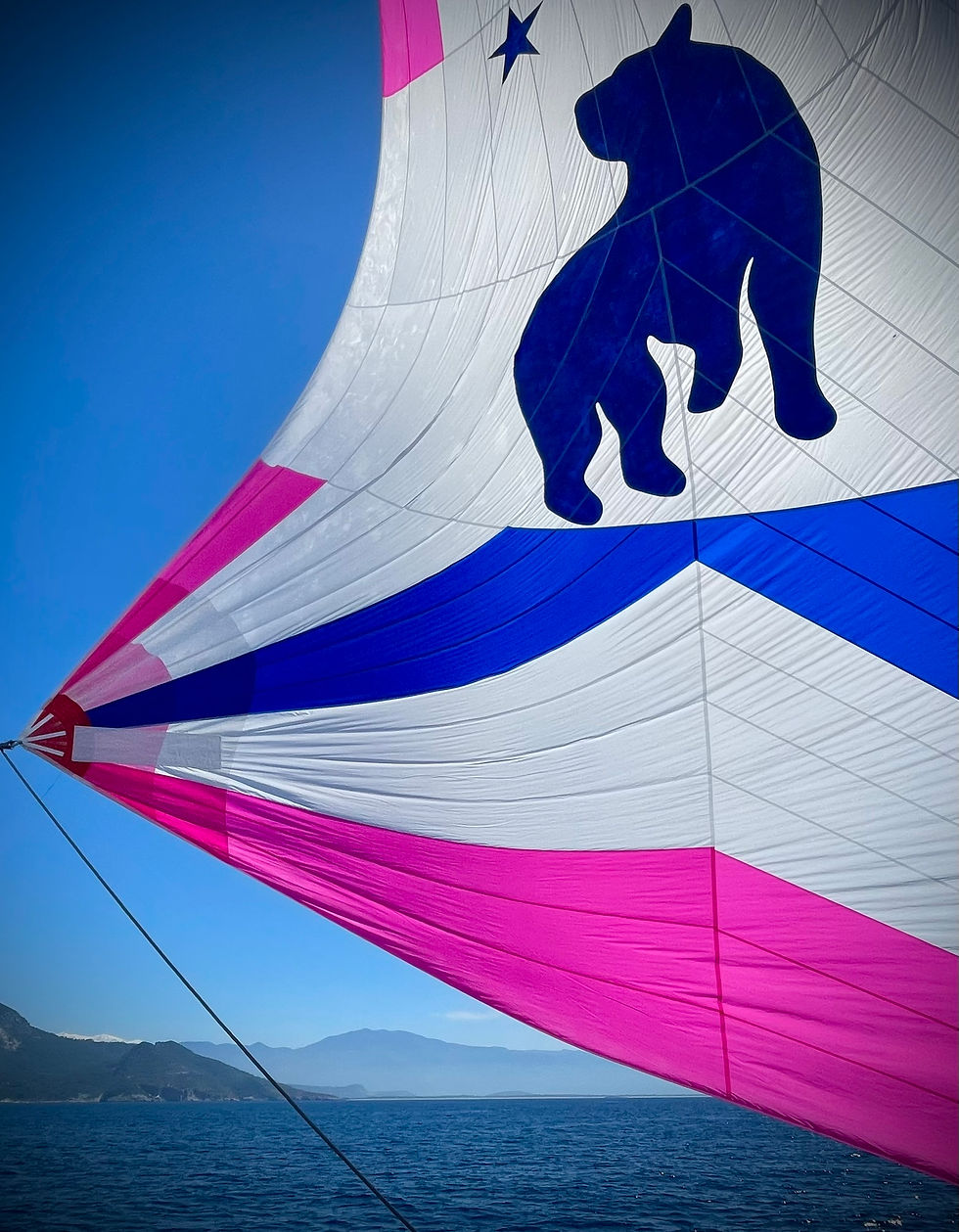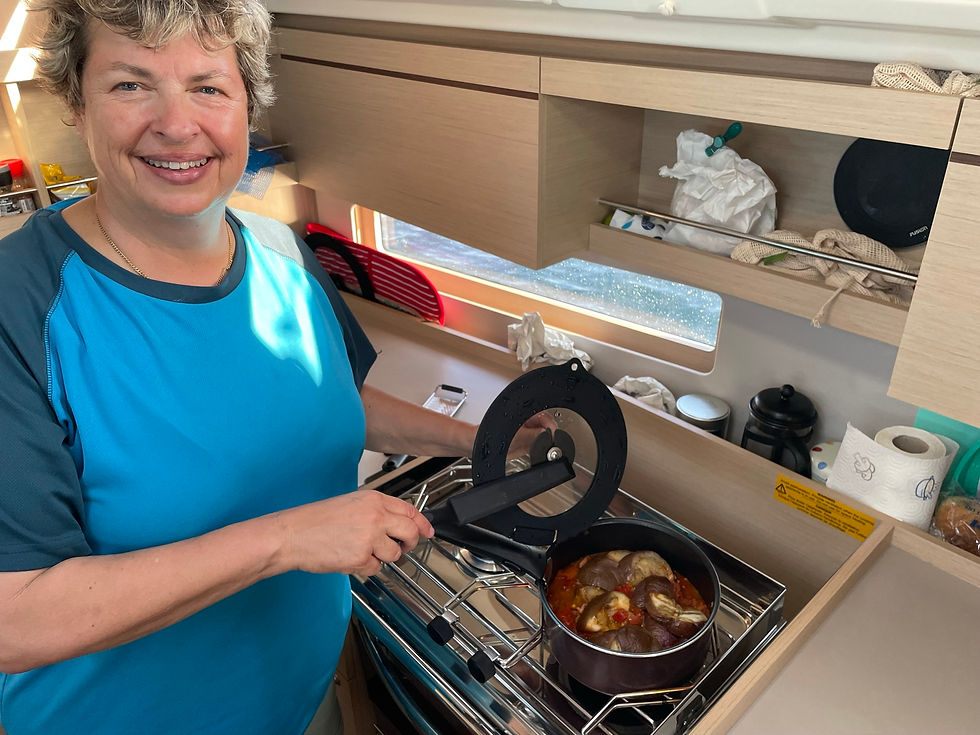Ancient Anatolia
- Richard Crooks
- May 17
- 5 min read
Updated: Nov 13


We have now spent a month sailing east and now westwards along this south-western corner of Asia Minor. Anatolia is a very rugged place, with the mountains of the western Taurus Mountains still snow-capped in May, and rising up almost at the shore line, as the African tectonic plate pushes northwards into its Eurasian neighbour.

There are several broad and flat valleys that provide some respite from the overwhelming vertical relief. For example, here at Fethiye, the once small settlement - of ancient Telmessus - is now an urban sprawl, where flat lands provide little obstacle to relentless, modern tourist-related development.
And, as we sailed south-eastwards from Marmaris to Kas with our Code-0 flying, we sailed along a strip of yellow beach, stretching for 18km, with the snow-capped peaks in the background. This was ancient Patara, and the beach marks the extent of the mouth of the Esen Stream. It used to be called the Xanthos river, as this old Lycian capital of Xanthos lies about 12 km upstream. As we saw in 2022, this flat river-valley bottom is now covered in square miles of polytunnels and greenhouses, growing valuable herbs and salad crops. But most of the landscape is steep, rocky, rugged, covered in scrub, and inaccessible, as witnessed by the large amount of tree-cover that still survives.
It’s hard to know what the old, indigenous Anatolian peoples did for a living in this terrain, despite being close to the cradle of civilisation further east (the sources of the Tigris and Euphrates rivers both lie in the eastern Taurus range.)
When wondering around, you often hear or stumble across herds of goats being jabbered at by a goatherd. I came across one herd near an ancient, ruined Lycian settlement near Demre [see video]. The goatherd climbed through the massive fallen walls and stepped onto the barrel-vaulted roof of an ancient stone cistern. He took off the lid, lowered in a plastic bucket on a long length of rope, and eventually drew out a pail full of sparkling, fresh water [Alix: I don’t think he means Perrier!]. He proceeded to fill plastic containers from which the goats drank thirstily. I don’t know whether the cistern was fed by ancient man-made down-pipes, or by a natural spring.
Given the number of goats, the amount of shrub and tree cover has not suffered, unlike in Greece. Maybe it’s all a matter of there being too great a density of animals on the islands, which are nibbled bare.
It's certainly easy to imagine that this partly nomadic way of life was how the rural ancients subsisted. They probably tended flocks of sheep as well, and we have seen quite a few Kangals (Anatolian Shepherd Dogs) that were used to keep the wolves away. Rather than the guard duties of their ancestors, they now seem to snooze the day away in the streets and doorways.
Although the Hittites were the major ancient race of Anatolia, they didn’t extend into this – for them remote - south-western tip of this peninsula. Two other ancient indigenous races – the Carians, and the Lycians – lived here. The Carian coast stretched from Bodrum (ancient Helicarnassus) to Marmaris (ancient Physkos). The Lycian coast stretched from there, eastwards, passed ancient Caunos, Telmessus, Pataras, Antiphellos (modern Kas), Myra (near modern Demre) and beyond. Missy Bear sailed almost to Demre before turning back westwards.
The major thing that differentiates the two coasts is the Lycian memorials to the dead. Lycia is renowned for its rock tombs and sarcophagi. In 2022, the crew of Missy Bear visited tombs cut into the rocks in several Lycian coastal settlements, including at Tomb Bay (near Gocek), and at the Dalyan River at ancient Caunos.


Now we were seeing sarcophagi everywhere, even in the town centre at Kas. At Kale Koy, inside Kekova Island, I scrambled up the hill to a whole ‘graveyard’ of these monumental stone coffins. They were all at ground level, and none perched on columns, like we had previously seen at Xanthos. All had had holes chiselled into one side, large enough for the head and arms of a grave robber to reach inside.
A particular attraction at Kale Koy is a sarcophagus that is actually sitting in about a foot of sea water. This is evidence of historic earthquakes that have shaken Asia Minor over the millennia. Not only have these massive tremors shaken all ancient city walls to the ground, but the land has sunk into the sea by several feet. There are still regular reports of significant earthquakes in the area now.
We took Ursa Minor to float over the ancient sunken city on the inner shore of Kekova island, where steps disappear underwater. And we have moored stern to on the island of Gemiler, with long lines tied up to bits of masonry from another sunken town. In both cases, the settlement was on land so steep, that it is hard to imagine how the inhabitants passed from one part to another carrying anything significant, unless it was by boat.

As the Greeks were great sailors, it was probably not surprising that they would arrive from the west. Caria, just like the Ionian coast to the north, was colonised by Greeks. It was the target of the Dorians. (Remember, we had anchored earlier in the southern bay of the ancient Dorian city of Knidos, overlooking the theatre and other ruins.)
But the Lycians seemed to retain some independence until Hellenic times, when their native language was lost to the Greek tongue. Nevertheless, Greek culture and architecture influenced the local Lycians as evidenced by the Ionic columns of the rock tombs at Telmessus.

Given the terrain, it’s obvious that these towns and cities could only thrive through sea-borne trade. And the Greeks were great sailors. So, it’s quite interesting to me that, after two thousand years of being left as a remote and isolated corner of Asia Minor (simply to be sailed past en-route somewhere else), the sea has been a major factor in the new life of this coastline. It is now called the Turkish Riviera and is packed with hotels, gulets and charter yachties.
We feel privileged to be aboard Missy Bear, because this coastline, although it can be hostile, offers numerous bays where one can shelter from the wind and swell. And after the day tripper boats have returned to base, you can find yourself alone with nature in a quiet bay. You can sit in the cockpit, looking at oaks and pine trees clinging to the rocks, and listen to the hoots of tawny owls as the sun sets, or the moon rises over the crags.





Comments